Venice owes much of its artistic allure to one woman: Peggy Guggenheim. The legendary American heiress and collector brought modern art’s boldest experiments to the Grand Canal. In the mid-1900s, her Venetian refuge was a cornerstone for art and culture. Decades later, that strange one-floor building is still one of Italy’s most visited modern art galleries.
The Peggy Guggenheim Venice Museum is the legacy of a woman whose unrelenting pursuit of risk and artistic freedom redefined how the world sees Venice as a beacon of modern creativity. Here’s how it happened.
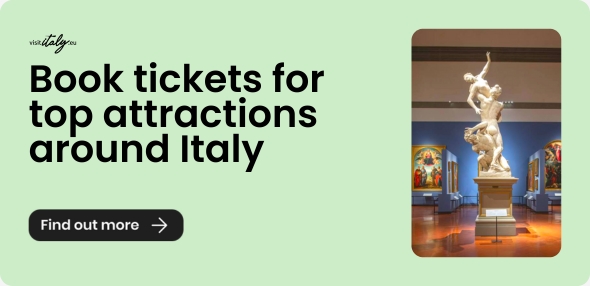
The Legacy of the Peggy Guggenheim Venice Museum
In many ways, the Peggy Guggenheim Venice Museum captures the spirit of its founder.
Between 1949 and 1979, Marguerite “Peggy” Guggenheim resided in Palazzo Venier dei Leoni, hosting dinners, art debates, and parties that everyone in Venice seemed to talk about.
A-list artists, writers, and eccentrics drifted through her salons. From Andy Warhol to Truman Capote, all found their way to Peggy’s place on the Grand Canal.
Forty-six years after Peggy Guggenheim died on 23 December 1979, the museum continues to be her stage. Her private rooms hold works made just for her, a collection that shows the bold and adventurous spirit she brought to her Venetian gallery.
She loved this place so much that she chose to stay forever: Guggenheim is buried in the museum’s garden, next to her beloved dogs.
Hers was no ordinary life. This is the story of how her bond with Venice became one of the city’s great love affairs.
Visit the Peggy Guggenheim Collection in VenicePeggy Guggenheim: A Life Between Passion and Provocation

Peggy Guggenheim sur les marches du pavillon de la Grèce en 1948 (24è Biennale de Venise)” by Jean-Pierre Dalbéra, CC BY 2.0
Peggy Guggenheim was born in New York in 1898 into one of America’s wealthiest families. She seemed destined for a life of comfort and convention. But Peggy had other plans. Her father, Benjamin, died in the sinking of the Titanic in 1912, a tragedy that marked her early life.
Around the age of twenty, restless and curious, she began working at The Sunwise Turn in New York, one of the city’s first intellectually minded bookshops. There she met writers, émigrés, and art lovers, and was introduced to European ideas that weren’t yet mainstream in America. That job was her first education in art, and her first escape from expectation.
She left for Europe in the early 1920s, settling first in Paris. In the Ville Lumière, she encountered the avant-garde directly. By befriending artists like Marcel Duchamp and Constantin Brancusi, Peggy started to build the network and the eye that would later define the Peggy Guggenheim Collection.
Peggy Guggenheim biography: the road to Venice
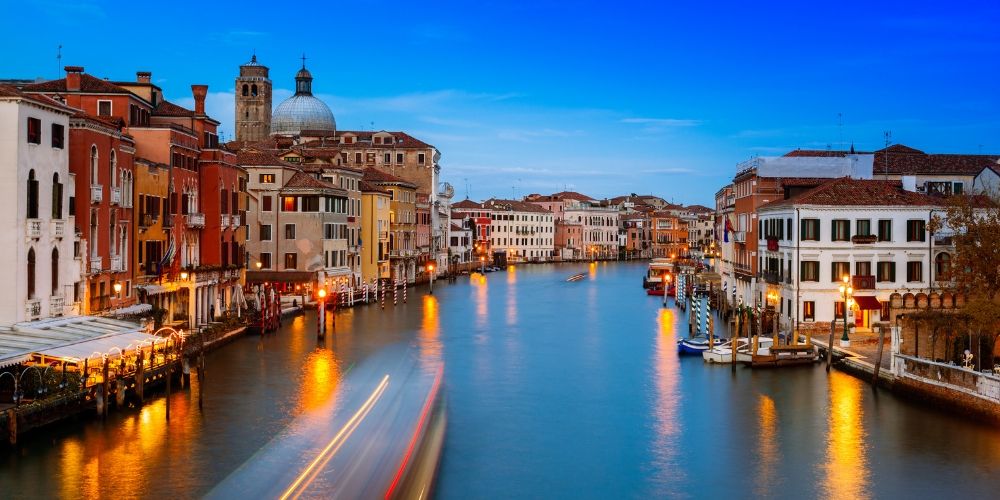
In 1938, Peggy Guggenheim opened the Guggenheim Jeune, one of the first galleries in Britain to focus on modern art and host shows dedicated to groundbreaking names like Magritte, Kandinsky, Miró and Picasso.
Despite its cultural impact, the London experiment wasn’t financially sustainable and closed after about a year.
With World War II tearing Europe apart, she fled to New York. Back in her hometown, she founded Art of This Century, a radical gallery that brought European Surrealism to American audiences and helped launch the career of a young Jackson Pollock.
By 1947, after several prolific years on the New York art scene, Guggenheim arrived in Venice and found the perfect setting for her next act.
Check out our 7-day itinerary for Venice.
Visit Venice with Venice PassPalazzo Venier dei Leoni
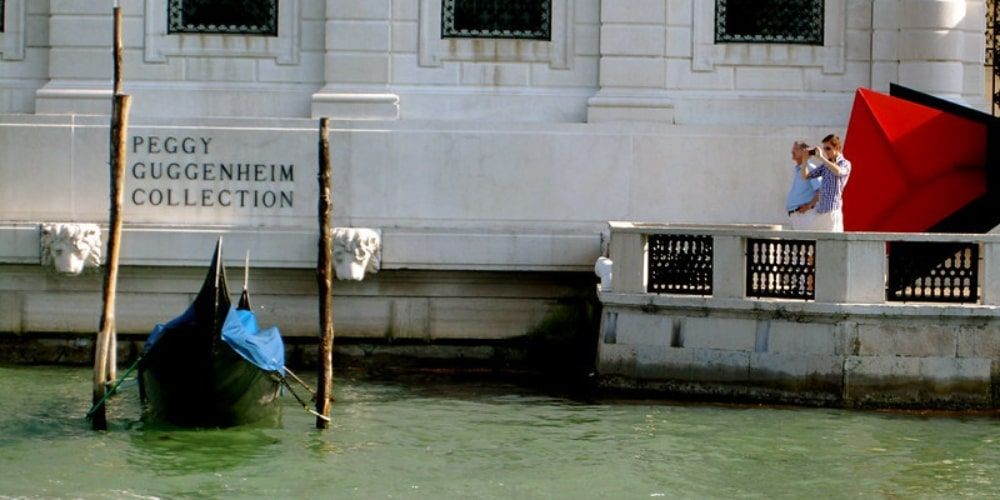
“Peggy Guggenheim Collection” by La Citta Vita, CC BY-SA 2.0
For her new Venetian chapter, Guggenheim chose Palazzo Venier dei Leoni, an unfinished 18th-century building with only one floor. Low and horizontal along the Grand Canal, the restrained lines of the palace contrasted with the ornate façades nearby, a modern character that perfectly suited her taste.
She purchased the palace in 1949 and lived there for the next three decades. The interiors were arranged much like a private gallery: paintings by Pollock, Miró, and Picasso lined the walls; sculptures by Arp and Giacometti stood in light-filled rooms; the garden, later home to her grave, displayed works by Jean Arp, Henry Moore, and Max Ernst.
While the building was being prepared, Guggenheim showed her collection at the 1948 Venice Biennale. That was her first major exhibition in Europe.
Also visit the best things to do in Venice for 2025.
The Role of the Venice Biennale in Peggy Guggenheim’s Career
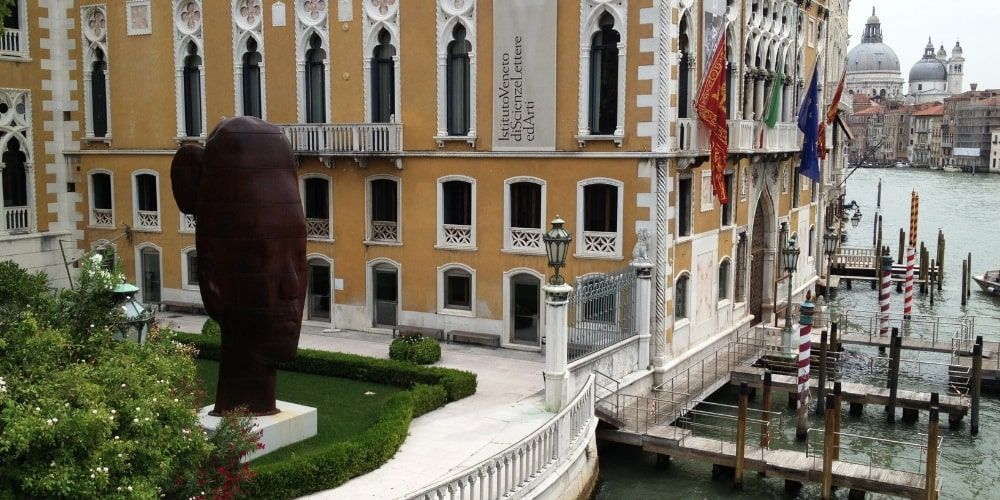
The 1948 Venice Biennale was a key moment for Peggy Guggenheim.
She was invited to showcase her modern art collection in the Greek Pavilion, which was empty due to the Civil War in Greece, and introduce a new group of artists to post-war Europe.
American painters like Jackson Pollock, Mark Rothko, and Arshile Gorky were exhibited alongside European masters for the first time. This had an immediate effect, sparking an exchange between the two continents, with Venice serving as the meeting point.
That Biennale started a series of changes. It built her reputation, strengthened her connection to Venice, and led to the creation of the Peggy Guggenheim Collection.
In just one summer, Guggenheim went from being a collector to someone who shaped culture. She became what she would later sum up in her own words: “I am not an art collector. I am a museum”.
The Peggy Guggenheim Collection
The Venice modern art museum stands out for its close connection to the life of its founder. Peggy Guggenheim put together one of the most cohesive collections of 20th-century art in Europe.
At its core are works from the major movements she followed closely between the 1920s and the 1950s: Cubism, Futurism, Metaphysical Painting, Surrealism, and Abstract Expressionism. That is why names such as Pablo Picasso, Joan Miró, Wassily Kandinsky, Max Ernst, René Magritte, Salvador Dalí, and Jackson Pollock are all represented.
Once she had settled in Venice, she didn’t stop collecting. She added works by post-war Italian artists she wanted to support — Tancredi Parmeggiani, Emilio Vedova, Edmondo Bacci, Piero Dorazio — alongside international figures like Francis Bacon, Karel Appel, Graham Sutherland, Marina Apollonio, and Kenzo Okada.
This gave the collection a second layer: on the one hand, the historical avant-gardes she had championed in Paris, London, and New York; on the other, the contemporary art being made in and around Venice.
Over time, the Peggy Guggenheim Venice Museum has become one of Venice’s sightseeing favourites, and one of the most influential modern art museums in the world
The Artworks of the Peggy Guggenheim Collection
The Peggy Guggenheim Collection brings together many of the most significant names in 20th-century art. Among the best-known works are Pablo Picasso’s On the Beach (1937), Max Ernst’s The Antipope (1942), Jackson Pollock’s Alchemy (1947), Joan Miró’s Women Encircled by the Flight of a Bird, Salvador Dalí’s Birth of Liquid Desires, and Constantin Brancusi’s Bird in Space.
Guggenheim built her collection through instinct, curiosity, and a rare sense of timing.
In Paris during the 1930s, she bought directly from artists who would later define the century.
During the war years in New York, she supported emerging American painters when few collectors were paying attention to them.
By the time she settled in Venice, her collection had initiated a dialogue between European movements, such as Cubism and Surrealism, and the emerging Abstract Expressionism from the United States.
In 1950, she organised Jackson Pollock’s first European exhibition at the Museo Correr in Venice, introducing his work to an international audience and confirming her role as a bridge for American art in Europe.
The Peggy Guggenheim Venice Museum continues to connect these worlds with one of the most comprehensive overviews of the 20th-century Venice art scene.
Peggy Guggenheim's Impact on the Venice Art Scene

Before Peggy Guggenheim’s arrival, Venice lacked a permanent centre for modern art, even though the Biennale had already made it an international platform for contemporary artistic exchange.
The Peggy Guggenheim Collection changed that. Her home became a gathering place for artists and intellectuals, reinvigorating the city’s creative energy.
By opening her doors to the public, Peggy offered Venetians their first close encounter with Cubism, Surrealism, and Abstract Expressionism. Her influence helped shift Venice’s cultural focus from the purely historical to the boldly modern.
The institution she created has been shaping the Venice art scene of the 20th century and beyond.
Now managed by the Solomon R. Guggenheim Foundation, the museum collaborates regularly with the Venice Biennale and other institutions, maintaining the city’s role as a link between artistic heritage and innovation.
Evolution of the Museum After Peggy Guggenheim’s Death
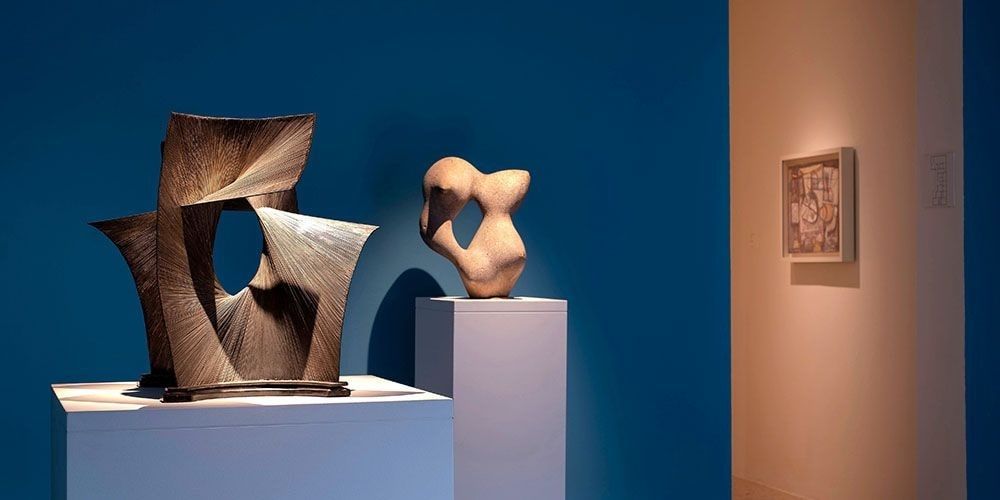
Peggy Guggenheim died in 1979, leaving her house and collection to the Solomon R. Guggenheim Foundation. The following year, Palazzo Venier dei Leoni officially opened to the public as the Peggy Guggenheim Collection, so that her vision would continue beyond her lifetime.
The museum evolved into a true cultural institution in the 1980s.
Over the years, more spaces have been added along with new educational programs for scholars, students, and art lovers. It also started hosting temporary exhibitions alongside the permanent collection.
The outdoor areas were also reimagined, with the addition of a new sculpture garden designed by Venetian architect Giorgio Bellavitis.
Each year, hundreds of thousands of people visit the Peggy Guggenheim Venice Museum. The Solomon R. Guggenheim Foundation manages the gallery and continues Peggy’s idea that art should be accessible and reflect its time.
Peggy Guggenheim Venice Museum - FAQs
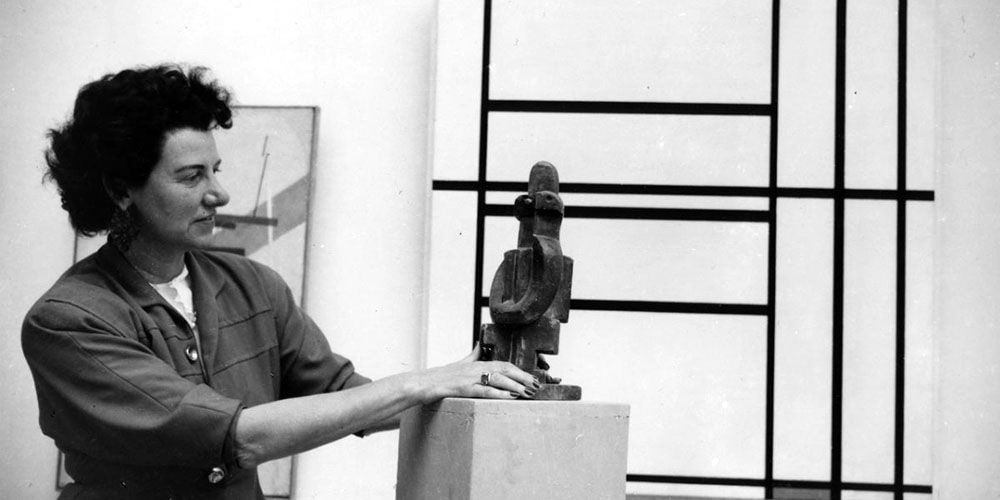
Where is the Peggy Guggenheim Collection located in Venice?
The Peggy Guggenheim Collection is inside Palazzo Venier dei Leoni, Peggy’s former home in Venice’s Dorsoduro district. The museum sits between the Accademia Galleries and Santa Maria della Salute church and can be reached by vaporetto, Line 1, Salute stop. For details on how to get around, see our guide to public transport in Venice.
What are the key artworks displayed at the Peggy Guggenheim Collection?
Highlights include Picasso’s On the Beach, Pollock’s Alchemy, Brancusi’s Bird in Space, Ernst’s The Antipope, and Dalí’s Birth of Liquid Desires. The collection traces the story of modern art, from European Surrealism to the rise of American Abstract Expressionism.
What are the visiting hours and ticket prices for the Peggy Guggenheim Collection?
The Peggy Guggenheim Collection is open every day from 10 a.m. to 6 p.m., except on Tuesdays when it is closed. The ticket office closes at 5 p.m. Tickets cost €16 for adults, €14 for anyone over 70, and €9 for students under 26. Children under 10 can enter for free. Your ticket covers both the permanent collection and any temporary exhibitions. Sometimes, hours or prices change for special events, so it is a good idea to check the museum’s website before you go.
About the author
Written on 13/11/2025


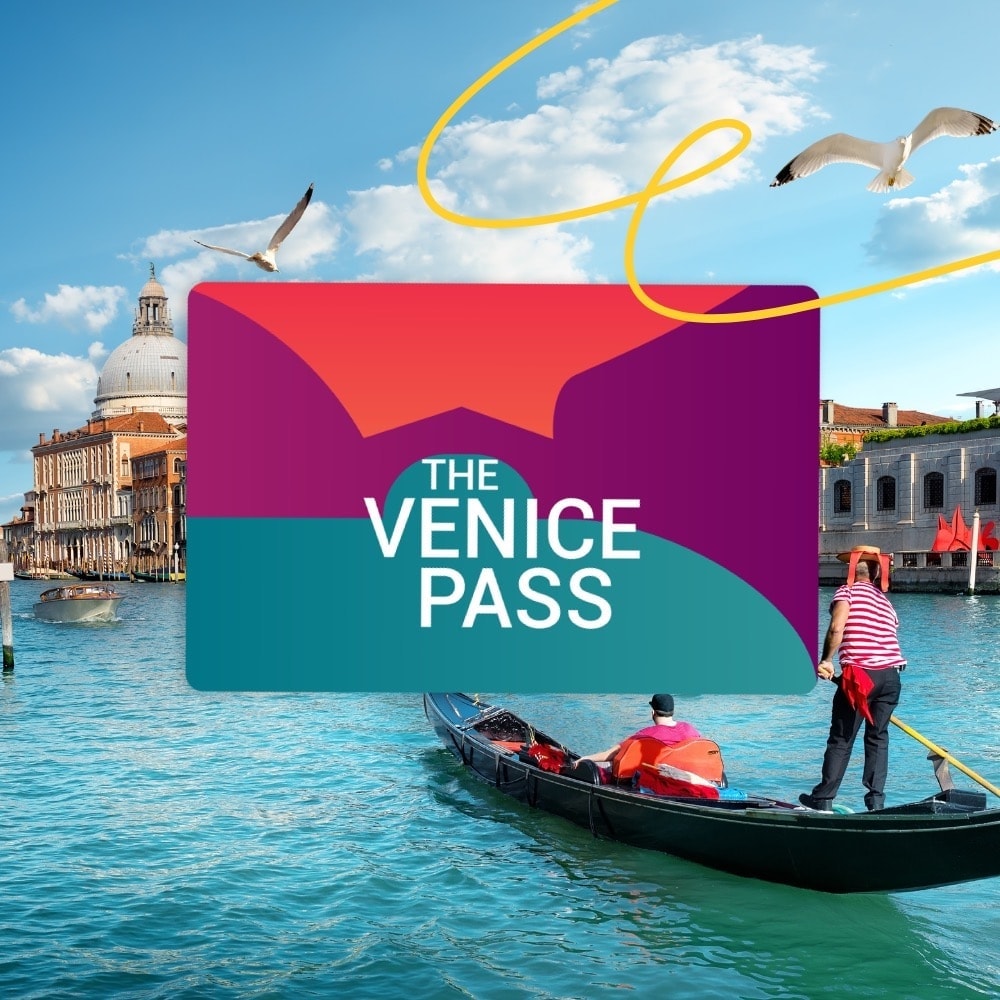

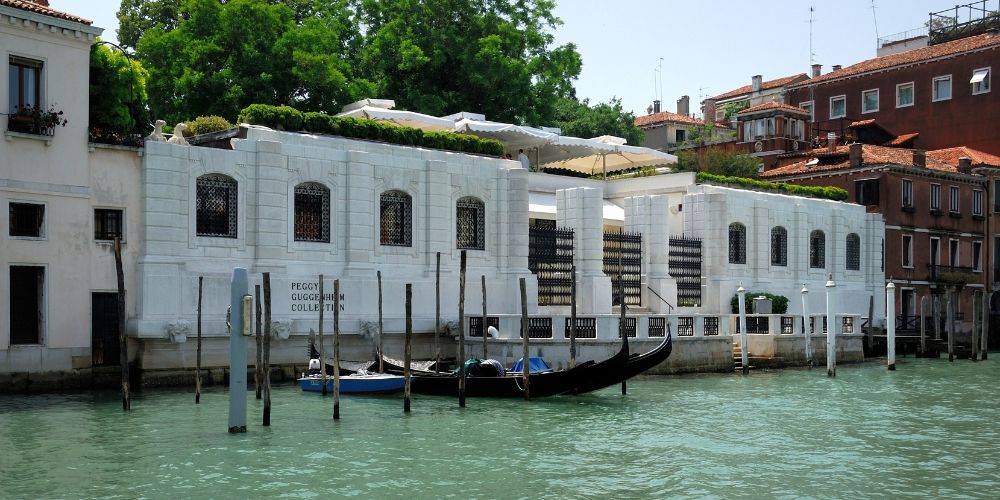

Lorena Calise
Inside the story of the heiress who transformed an incomplete Venetian palace into one of the world’s most influential modern art museums.